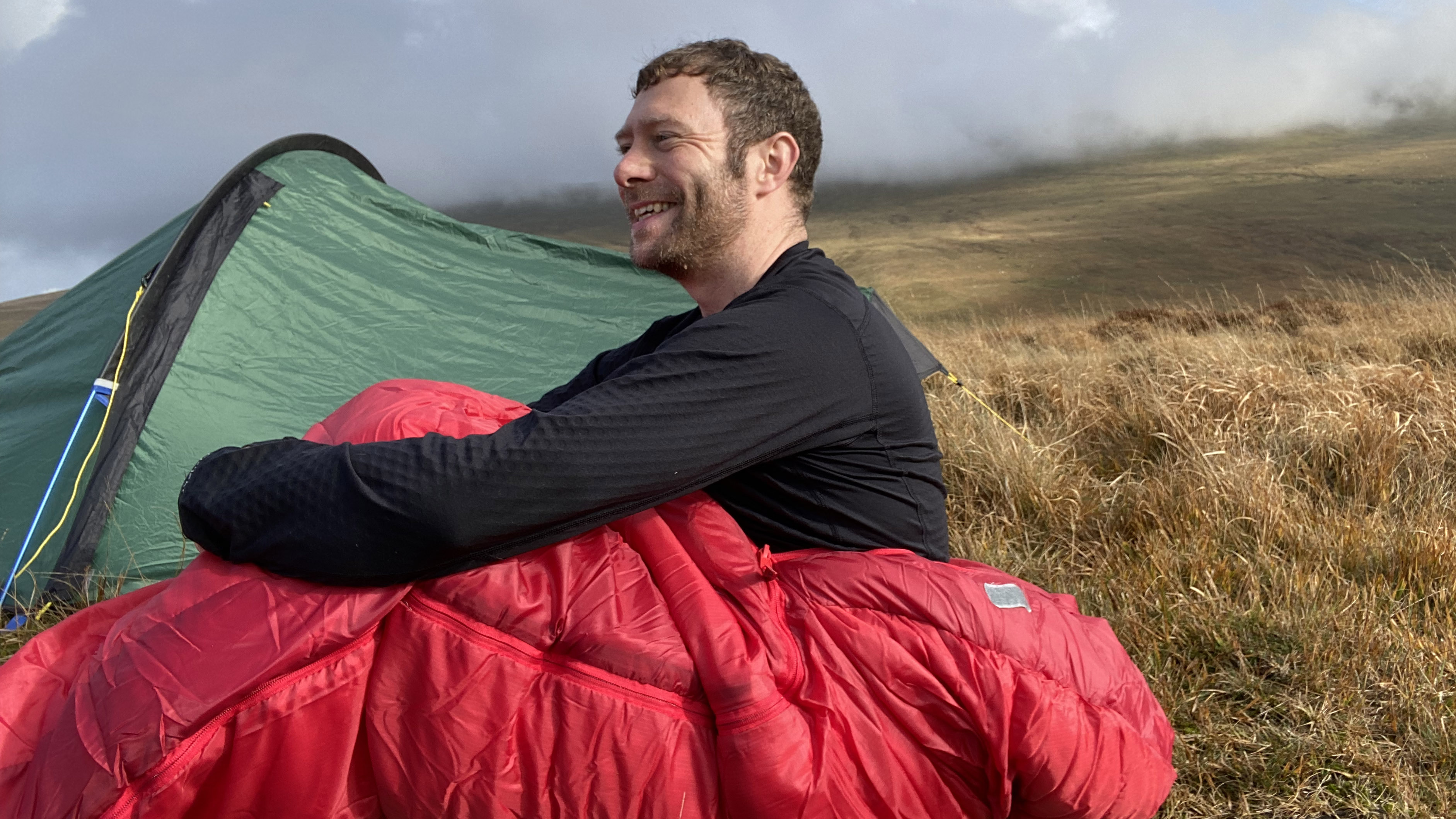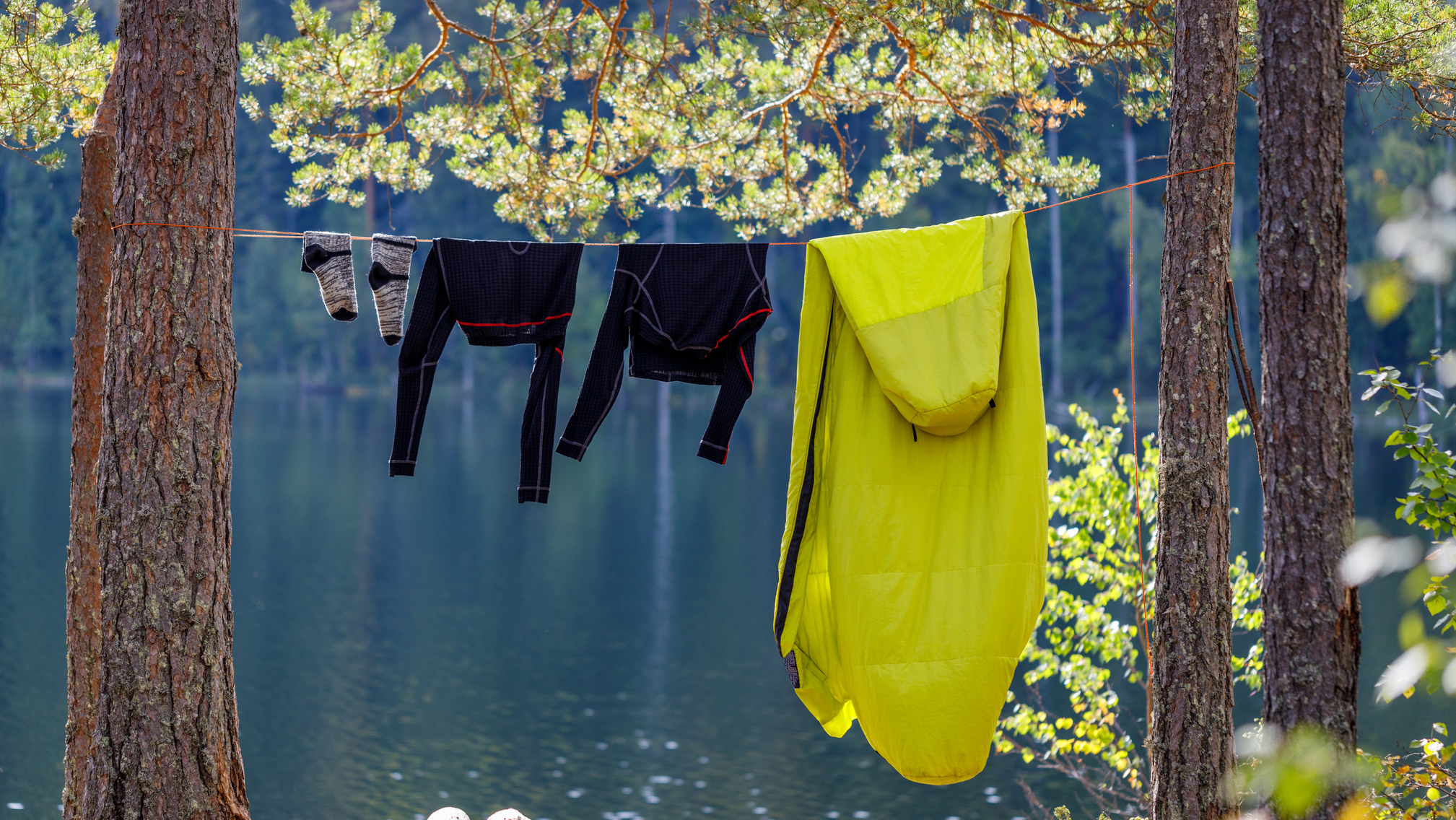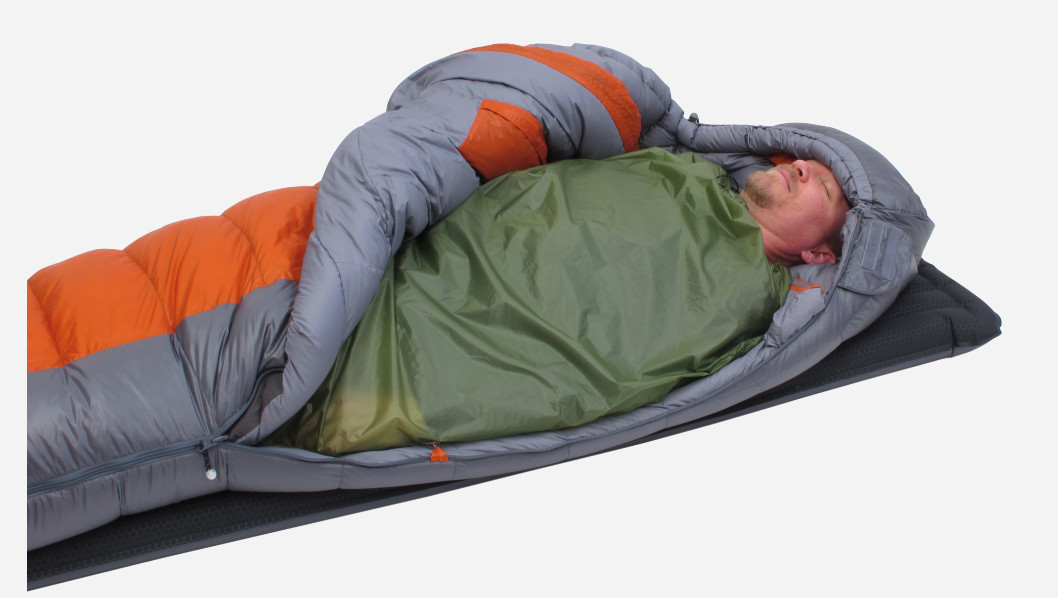7 reasons you need a sleeping bag liner: comfort, warmth and protection for your cocoon
Enhance your camping adventures from the campground to the summit

For serious adventurers and avid campers, a quality sleeping bag is a no brainer. It’s arguably the most important component of your camping kit, enabling you to sleep warm in the wild, rest comfortable in the cwms and laze happily by a lake. If you’ve invested in a lightweight sleeping bag, you’ll know that it’s worth its weight in gold for its portability, warmth and performance in the great outdoors.
However, the best sleeping bags, particularly those filled with down, take quite a bit of effort to care for. Over time, dirt, sweat and body oils work their way into the fabrics, diminishing the loft and compromising its ability to insulate effectively. Washing a sleeping bag requires specific products and a very delicate wash cycle, while drying the bag properly out can take several days. In short, it’s a bit of a faff, particularly if you don’t have much time between your adventures.
What if there was a product that not only enhanced the comfort, warmth and performance of your sleeping bag, but also protected it as part of the bargain too? Enter, the sleeping bag liner, a simple yet elegant solution. There are many reasons you need a sleeping bag liner, so let’s get into our main ones…
Meet the expert

As a Mountain Leader and wild camper, Alex knows how important it is to properly look after camping kit when exploring the backcountry. Originally from Cumbria, home to the Lake District National Park, he’s now based in England’s southwest and enjoys frequent adventures to the Scottish Highlands and North Wales, as well as trips to the Alps. He counts any innovation that extends the life of his gear a blessing.
Today's best deals
What is a sleeping bag liner?
- A sleeping bag liner is a lightweight sack that slots into a sleeping bag
- They provide additional warmth, comfort and protect your sleeping bag
- They’re typically made from either silk, polyester, polyamides, fleece or polycotton

A sleeping bag liner is a lightweight, sleeping bag-shaped sack that’s designed to slot inside your bag, providing an additional layer of material. The advantages are many: a liner gives additional warmth and comfort, while also providing a protective barrier for the lining and insulating fill of your sleeping bag. Better still, they’re machine washable after use, which makes them easy to look after.
Sleeping bag liners are usually woven from either silk, microfibres made from polyester or polyamides, fleece, cotton or polycotton – which, as its name suggests, is a blend of polyester and cotton. Silk sleeping bag liners tend to be the most expensive, though they’re also luxuriously lightweight, soft against the skin and provide a good level of protection for your sleeping bag.
Let's get into the reasons you need a sleeping bag liner...
1. To protect your prized cocoon
- Liners protect your sleeping bag from dirt, sweat, damp and body oils
- This extends the lifespan of your sleeping bag

You want your sleeping bag to last as long as it can. For many, the main benefit of a sleeping bag liner is that it protects your bag from grime, sweat, body oils and damp by providing an additional layer of material. This, to a lesser extent, also protects the bag’s lining from getting torn by a rogue multitool or key.
Advnture Newsletter
All the latest inspiration, tips and guides to help you plan your next Advnture!
Why is this so important? Well, at the time of writing, the bags in our best sleeping bags buying guide range from around $100 (£80) to a whopping $760 (£570), while a dedicated 4-season sleeping bag may set you back even more. So, it’s fair to say a quality sleeping bag is quite an investment and one that you won’t want to be repeating all too often. By using a sleeping bag liner, you extend the lifespan of your bag.
As well as the monetary cost, there’s also the environmental and ethical cost involved with sleeping bags. Neither down nor synthetic insulation is perfect in this regard. A down sleeping bag is filled with natural down plucked from ducks or geese and practices in some places are cruel to say the least. Admittedly, brands are increasingly aware of ensuring that the down used in their products is sourced ethically, but it’s still an imperfect picture. Meanwhile, synthetic fill, usually made from polyester, will never biodegrade, and has a habit of leaching microplastics when washed, which end up polluting the world’s oceans.
For the purpose of balance, it’s worth noting that liners aren’t necessarily perfect either. Many are made from similar synthetic materials, while silk is produced by boiling silkworm cocoons with silk larvae inside. Cotton liners are perhaps the most ethical choice.
2. They're easy to clean
- Unlike sleeping bags, liners are easy to launder and dry

We’ve already established two key points here. Firstly, sleeping bags are a bit of a faff to clean and to dry afterwards. Secondly, synthetic sleeping bags leach harmful microplastics that work their way into our watercourses and end up in the ocean. In an ideal world, you want to wash your sleeping bag as little as possible through the course of its life.
The good news is that your wonderful liner has taken all the hits, soaking up all the grime, body oils and sweat (possibly blood and tears too, if you’re trip was particularly gripping) from your adventures. Simply remove your liner from your bag and when you get home, pop it in the laundry – most are machine washable with standard detergent. Not only this, unlike a sleeping bag, they dry just as quickly as the rest of your washing. Job done.
3. It’s luxuriously soft
- Silk sleeping bag liners are wonderfully soft against the skin and breathable too
- Synthetic liners are also designed to provide enhanced comfort

As well as protection, sleeping bag liners provide enhanced levels of comfort. Undoubtedly, the most luxurious are those made from silk, which are gloriously cozy and soft against the skin. Not only this, they tend to be more breathable than other liners, perfect for those summer camps.
However, it’s not just silk liners that add an element of comfort to your slumbers. Synthetic liners are also designed to be highly breathable and moisture wicking, as well as being pleasant against the skin too. Hybrid materials, such as polycotton, are also comfortable to lie on, while being more durable than standard cotton. Whatever you choose, it’s likely that a liner will feel better against the skin than your sleeping bag’s inner fabric.
4. Additional warmth for cold camps
- A fleece liner provides insulation for cold season camping
- Depending on various factors, a liner can add between 5°F to 25°F of warmth

Different kinds of sleeping bag liners offer different levels of warmth. A fleece liner will be far more insulating than a silk liner for example. Regardless, anyone who’s familiar with layering will know that more layers equals more warmth. So, a sleeping bag liner is a particularly wonderful thing for winter or shoulder-season camping, when you might need every additional degree of heat to make for a comfortable night’s sleep. Depending on the design and materials, a liner can add between 5°F to 25°F of warmth to your sleeping system.
That’s not to say you shouldn’t take a liner with you for summer adventures. The reasons I’ve already given should be enough to convince you that they’re a great help all year round. However, if you’re heading for the desert in July, you’d be better served by a thin silk liner than a beefy fleece one.
5. It weighs next to nothing
- Sleeping bag liners are very light and take up very little space
- They’re worth the additional weight for all the benefits above

Hauling camping gear through the backcountry can be a testing experience. While kit these days is lighter than ever, even a one-night expedition can render your hiking experience to something akin to a yak’s, doggedly lugging your load up to a chosen basecamp. Why, then, would you want to add something that’s arguably not absolutely essential?
Well, a sleeping bag liner can weigh anything between 100g and 1kg, though most tend to be towards the lighter end of this scale. Silk, polyester and polycotton liners weigh next to nothing and take up very little space in your pack. We’d argue that, for all the reasons given above, having a liner is worth every extra gram. Even hauling in a bulky fleece liner, which is likely to be on the heavier end of the scale, is worth it for the additional warmth on winter camps.
6. A breezier alternative for hot nights in camp
- You can use a sleeping bag liner on its own on hotter nights
- When used with a bag, you can open things up if you get hot in the night

Just as you wouldn’t wear your best down jacket in the blazing June sun, you probably won’t want to snuggle up in your insulated sleeping bag when a summer heat wave washes across the backcountry – not unless you want to lose half your body weight in sweat.
This is when a sleeping bag liner can be used in isolation, providing a comfortable cocoon without hoarding every bit of heat you expel. If the forecast predicts balmy nights ahead, leave your bulky bag at home, thus shedding a load of grams from your pack, and head on out there.
If you're sleeping in both your bag and liner and get a little stuffy during the night, you can always peel back your bag to cool down, just like unzipping a layer while hiking.
7. You’ll need one for that hut-to-hut trek
- Many mountain huts insist on the use of a sleeping bag liner
- Hut dorm rooms tend to be very hot in the night – a liner is a cool option

If you’re embarking on a hut-to-hut trek or you’re hiking up to a refuge before striking out to an alpine summit, you’ll need a sleeping bag liner, which are even referred to as ‘hut sleeping bags’ by some. This is because they’re mandatory kit, insisted upon by mountain huts across Europe and the US for hygiene reasons.
Of course, you could carry an all-singing, all-dancing sleeping bag. However, the shared dorm rooms in mountain huts tend to get a little stuffy at night thanks to the radiated heat of dozens of slumbering hikers and mountaineers. Unless you’re rocking up to a deserted refuge in the dead of winter to use the dedicated off-season facilities, you’ll be better served by a cotton liner or similar.
Alex is a freelance adventure writer and mountain leader with an insatiable passion for the mountains. A Cumbrian born and bred, his native English Lake District has a special place in his heart, though he is at least equally happy in North Wales, the Scottish Highlands or the European Alps. Through his hiking, mountaineering, climbing and trail running adventures, Alex aims to inspire others to get outdoors. He's the former President of the London Mountaineering Club, is training to become a winter mountain leader, looking to finally finish bagging all the Wainwright fells of the Lake District and is always keen to head to the 4,000-meter peaks of the Alps. www.alexfoxfield.com

